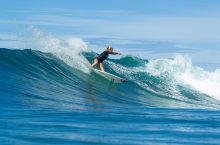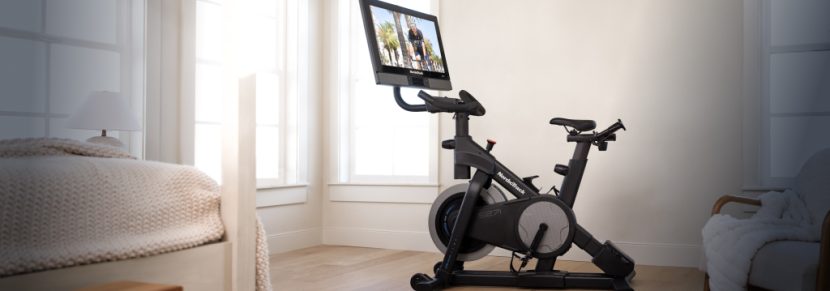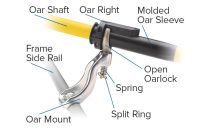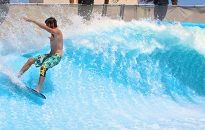“You don’t necessarily have to participate every week,” Jefferys says. “Sometimes life gets in the way. But whenever you’re ready, it’s always there.”“Radio taiso” was founded in the US in 1920, as a public-health initiative sponsored by the Metropolitan Life Insurance Co, but it did not really take off. It took hold in Japan around […]

“You don’t necessarily have to participate every week,” Jefferys says. “Sometimes life gets in the way. But whenever you’re ready, it’s always there.”“Radio taiso” was founded in the US in 1920, as a public-health initiative sponsored by the Metropolitan Life Insurance Co, but it did not really take off. It took hold in Japan around 1928, according to Satoru Kanamori, an associate professor at the Teikyo University graduate school of public health.There is so much activity that “if you go to Rio de Janeiro and Copacabana at 5.30pm, it will be hard to walk in a straight line”, says Luiz Guilherme Grossi Porto, a professor of physical education and public health at University of Brasília.
Finland: Walk wherever you can, even when it is freezing
Thanks to its simplicity and adaptability, “radio taiso” has become a “deeply rooted” part of Japanese culture, Prof Kanamori says.

For many people, staying in shape means getting in your car and driving to the gym. Movement is something on a to-do list, siloed off from the rest of daily life.It was originally founded by cross-country skiers in the 1930s as a form of cross-training. Plus, the poles can turn an ordinary walk into a full-body workout.When you live in a nation like Finland, where daylight only lasts for six hours in the middle of winter, you learn to embrace extremes.That event gradually grew into Parkrun, an organisation that now hosts about 2,500 free running events every weekend in public spaces across 23 countries including Ireland, Malaysia and Namibia.However, there are other ways of approaching exercise. In many countries, movement is baked into everyday life – as a way to commute from one place to another, to build community or to connect with nature.Every day, a short exercise routine known as “radio taiso” is broadcast across Japan on YouTube and Japan’s national radio station. In parks, office buildings and schoolyards, groups of people join together throughout the day in a three-minute, 13-move callisthenic routine – no equipment required.Twenty years ago, a runner named Paul Sinton-Hewitt invited a small group of friends to what he called the Bushy Park Time Trial: a 5km run in London with the promise of coffee afterwards. They had a great time, so Sinton-Hewitt decided to do it again the next weekend and the weekend after.
Japan: Embrace short bursts of exercise
“Brazilians are more prone to do things together than by themselves,” says Victor Matsudo, the chairman of Agita São Paulo, an initiative in the state of São Paulo that created new green areas, sports facilities and improved walkways.He fondly recalls doing the exercises as a child almost every morning. Now he sees people practise the same routine communally: construction workers in the morning, office workers in the afternoon and the elderly throughout the day.As in many European cities, walking is a default form of transportation. Tiina Arrankoski, of the International Council of Nordic Walking, says: “We are also used to using our legs – not the car.”

If you’re trying to build a habit, it never hurts to make it fun. – This article originally appeared in the New York TimesSo it is no wonder that the Finnish have a “no bad weather, only bad clothes” type of mentality, says Mika Venojärvi, a professor of exercise medicine at the University of Eastern Finland. It is always popular to explore the outdoors, he says, even in frigid temperatures.Still, Prof Venojärvi has a pretty high bar for staying indoors: He draws the line at minus 22 degrees. Otherwise “it’s very nice when the sun is shining”.Nordic walking, or walking with specialised poles, is a proud Finnish tradition. It’s an accessible sport that encourages people to get outside and enjoy the public parks and forests.
Britain (and now Ireland): A workout can be a community event
Movements include arm circles, forward bends, backward bends and star jumps, which are similar to jumping jacks.Here are some lessons we might learn from those cultures, according to fitness experts.

[ Wild caving, axe throwing, aerial yoga: Step outside your comfort zone with these hobbiesOpens in new window ][ Exercise is great, but are you resting too little or too much?Opens in new window ]
Brazil: Make fitness feel like a party
Brazil’s beaches are routinely packed with people jumping, sprinting, squatting and skating. Beach volleyball and soccer games dot the sand, sandwiched between walkers on boardwalks and surfers in the Atlantic.The programme, which was launched in 1996, also hosts fitness “mega-events” that are reminiscent of festivals, with activities such as dancing, volleyball and seminars on the importance of an active lifestyle. The initiative has since been replicated across Brazil and Latin America.

Even a little exercise, especially if you increase the intensity, can improve your health. While ideally you should work out for longer than a few minutes at a time, there are still clear benefits of routinely elevating your heart rate, says Dr Jeremy Swisher, a sports medicine physician at UCLA Health.If it’s really too cold for outdoor exercise, Finland also has robust infrastructure for physical activity, about 80 per cent of which is run by local authorities, according to a 2021 study by the World Health Organisation.Some participants run fast while others go for a leisurely stroll. The magic comes from the simplicity, consistency and community, says Russ Jefferys, the chief executive of Parkrun. Crucially, it is always free. After the finish, many runners and walkers share coffee or breakfast nearby.














